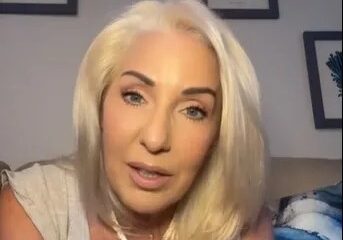Top Stories
Germany Faces Innovation Crisis Despite €90B R&D Investment

Germany, long celebrated as a global engineering leader, invested a staggering €90.4 billion in research and development (R&D) in 2023. This figure places the country among the top spenders on innovation worldwide, according to a recent study by Speedinvest and Bits&Pretzels. Despite this substantial investment, a significant challenge remains: over 85% of the funds are retained within established corporate structures, limiting collaboration with startups. This conservative approach threatens Germany’s ability to capitalize on advancements in artificial intelligence and deep technology.
While U.S. tech giants like Alphabet, Amazon, and Meta allocate nearly 30% of their R&D budgets to startup partnerships, German corporations such as Volkswagen and Bosch confine approximately 90% of their innovation spending to internal research facilities. Ion Hauer, Principal at APEX Ventures, emphasizes that the situation is not merely a matter of underinvestment but rather a complex, sector-specific transition. “Our market data suggests we are not at a single ‘tipping point’ but rather in a period of accelerated, sector-specific transition,” he said.
Challenges in Scaling Innovation
While Germany excels in piloting innovative projects, scaling these initiatives remains a significant hurdle. Alexander Pöhler, founder of Assemblean, highlights that the real obstacles arise post-pilot. “Startups are welcomed to present their solutions, and exciting proof-of-concepts often emerge. But as soon as it comes to integrating the innovation into the core business, things get stuck,” Pöhler explained. Issues such as unclear responsibilities and protracted decision-making processes hinder progress, with corporations often prioritizing security and risk avoidance.
Financial experts like Charlotte Goggin, Director at CIBC, point out the necessity of securing budgets for scaling successful pilots. She recommends that steering committees grant conditional approval for integration budgets based on key performance indicators (KPIs). Similarly, Robert Windesheim from Founders Fund argues that traditional industries in Germany face a cultural lag, treating pilots as academic exercises rather than business commitments. “Money isn’t enough: deep cultural permission to innovate and collaborate is the real lever,” Windesheim stated.
Structural and legal barriers also play a crucial role. Sebastian Heinz, CEO of HPB, notes that exhaustive due diligence and restrictive legal terms can obstruct scaling efforts. He advocates for a shift in mindset, suggesting that innovation should be viewed as a primary source of wealth. “Use standard NDAs, milestone-based disclosures, and protect IP by default,” Heinz advised, emphasizing the need for clear ownership and continuity.
Creating a Collaborative Innovation Ecosystem
To overcome these challenges, industry leaders advocate for a cultural shift towards collaboration. Goggin stresses the importance of charging for products to signal revenue potential, while Marie Hélène Amériter of Speedinvest observes that, despite increasing corporate engagement, many AI pilots remain unscaled, indicating that collaboration efforts are still in their infancy.
Autonomy in the innovation process is another critical factor. Jessica Holzbach, founder of Pile and Penta, asserts that innovation thrives when there is creative freedom. “Corporates must step away from micro-management and trust startups while aligning on goals,” she stated.
The report by Speedinvest and Bits & Pretzels demonstrates that corporations that strategically engage with startups through Corporate Venture Capital (CVC) and Venture Clienting achieve superior growth and market valuation. Notably, every additional year of CVC activity is associated with an estimated 8.5% increase in price-to-sales multiples among German firms.
As Germany looks to reclaim its innovation leadership, dismantling the “fortress mentality” and fostering a dynamic, partnership-driven ecosystem will be essential. Companies that effectively blend robust internal R&D with agile startup collaboration will be best positioned to navigate the technological waves of the future.
-

 Health3 months ago
Health3 months agoNeurologist Warns Excessive Use of Supplements Can Harm Brain
-

 Health3 months ago
Health3 months agoFiona Phillips’ Husband Shares Heartfelt Update on Her Alzheimer’s Journey
-

 Science1 month ago
Science1 month agoBrian Cox Addresses Claims of Alien Probe in 3I/ATLAS Discovery
-

 Science1 month ago
Science1 month agoNASA Investigates Unusual Comet 3I/ATLAS; New Findings Emerge
-

 Science4 weeks ago
Science4 weeks agoScientists Examine 3I/ATLAS: Alien Artifact or Cosmic Oddity?
-

 Entertainment4 months ago
Entertainment4 months agoKerry Katona Discusses Future Baby Plans and Brian McFadden’s Wedding
-

 Science4 weeks ago
Science4 weeks agoNASA Investigates Speedy Object 3I/ATLAS, Sparking Speculation
-

 Entertainment4 months ago
Entertainment4 months agoEmmerdale Faces Tension as Dylan and April’s Lives Hang in the Balance
-

 World3 months ago
World3 months agoCole Palmer’s Cryptic Message to Kobbie Mainoo Following Loan Talks
-

 Science4 weeks ago
Science4 weeks agoNASA Scientists Explore Origins of 3I/ATLAS, a Fast-Moving Visitor
-

 Entertainment4 months ago
Entertainment4 months agoLove Island Star Toni Laite’s Mother Expresses Disappointment Over Coupling Decision
-

 Entertainment3 months ago
Entertainment3 months agoMajor Cast Changes at Coronation Street: Exits and Returns in 2025









